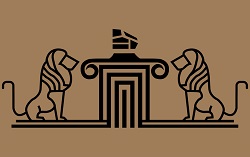Onyx is an intriguingly marvellous and translucent natural stone. It is composed mostly of calcite minerals, just like marble, limestone and travertine; therefore, it’s often commercially called onyx-marble. Usually onyx forms in areas where mineral-rich water meets the rocky soil, at mouths of springs, hence the very formation process is much more similar to travertine rather than marble.
Onyx most commonly comes in the warm hues of yellow or orange, caused by iron deposits in the rock, but due to the presence of different minerals, it can also be green, purple or brownish. The black onyx, used for making jewellery, is an entirely different rock, made out of mostly silica and formed deep in the earth’s crust.
For building projects, onyx is usually cut into slabs of varying thickness. Onyx stone isn’t as durable as travertine, for example, and it should be avoided in areas of heavy use. A sturdy (fibreglass) base is often required before installation to ensure longevity. On the other hand, onyx is truly magnificent due to unique patterns and translucent properties.
Some of the uses of onyx for building can be table and countertops, basins or lightning fixtures. Only when backlit, onyx lives up to its true potential, fully showcasing its incredible properties. This fact makes it a perfect choice to highlight specific visual focal points, such as hotel lobbies or reception desks, for example, as it will certainly deliver a sense of exquisite style and luxury. If you consider onyx as a building material, make sure to take advantage of this stone’s natural properties. Onyx is bound to induce the feelings of awe and reverence towards our planet’s breathtaking natural resources.



